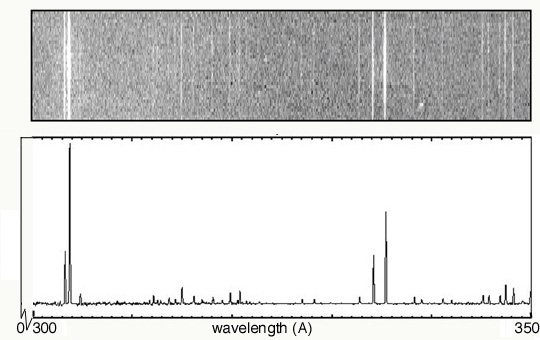Student Worksheet: Graphing Spectra
Graphing Spectra - A Student Worksheet
Part I.
Below are two examples of the same emission spectrum. The first example is without any "quantitative" data, while the second shows light energy as a function of wavelength. The x-axis has the same units (wavelength, in this case, although frequency or energy could also be used) in both cases, and it runs from 300 to 350 angstroms. In your group, discuss the following questions, then write individual answers on paper.
|
Solar UV Spectra

|

